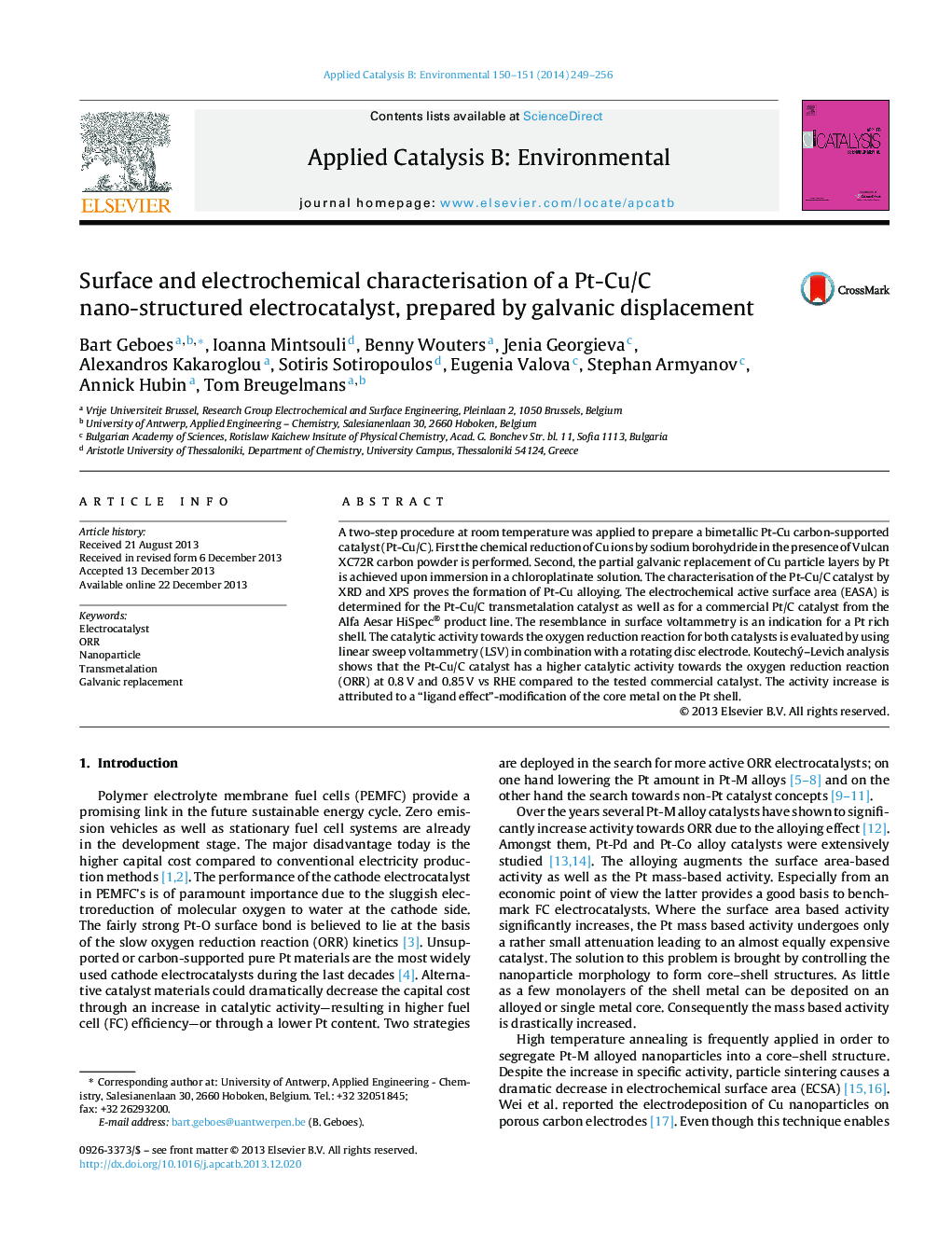| Article ID | Journal | Published Year | Pages | File Type |
|---|---|---|---|---|
| 45929 | Applied Catalysis B: Environmental | 2014 | 8 Pages |
•A bimetallic Pt-Cu carbon supported catalyst was prepared by transmetalation.•A two-step procedure at room temperature is applied to prepare the catalyst.•The formation of Pt-Cu alloying is proved by XRD.•XPS indicates Pt presence on the nanoparticle surface.•The Pt-Cu core–shell catalyst shows superior activity towards a Pt nanocatalyst.
A two-step procedure at room temperature was applied to prepare a bimetallic Pt-Cu carbon-supported catalyst (Pt-Cu/C). First the chemical reduction of Cu ions by sodium borohydride in the presence of Vulcan XC72R carbon powder is performed. Second, the partial galvanic replacement of Cu particle layers by Pt is achieved upon immersion in a chloroplatinate solution. The characterisation of the Pt-Cu/C catalyst by XRD and XPS proves the formation of Pt-Cu alloying. The electrochemical active surface area (EASA) is determined for the Pt-Cu/C transmetalation catalyst as well as for a commercial Pt/C catalyst from the Alfa Aesar HiSpec® product line. The resemblance in surface voltammetry is an indication for a Pt rich shell. The catalytic activity towards the oxygen reduction reaction for both catalysts is evaluated by using linear sweep voltammetry (LSV) in combination with a rotating disc electrode. Koutechý–Levich analysis shows that the Pt-Cu/C catalyst has a higher catalytic activity towards the oxygen reduction reaction (ORR) at 0.8 V and 0.85 V vs RHE compared to the tested commercial catalyst. The activity increase is attributed to a “ligand effect”-modification of the core metal on the Pt shell.
Graphical abstractFigure optionsDownload full-size imageDownload as PowerPoint slide
